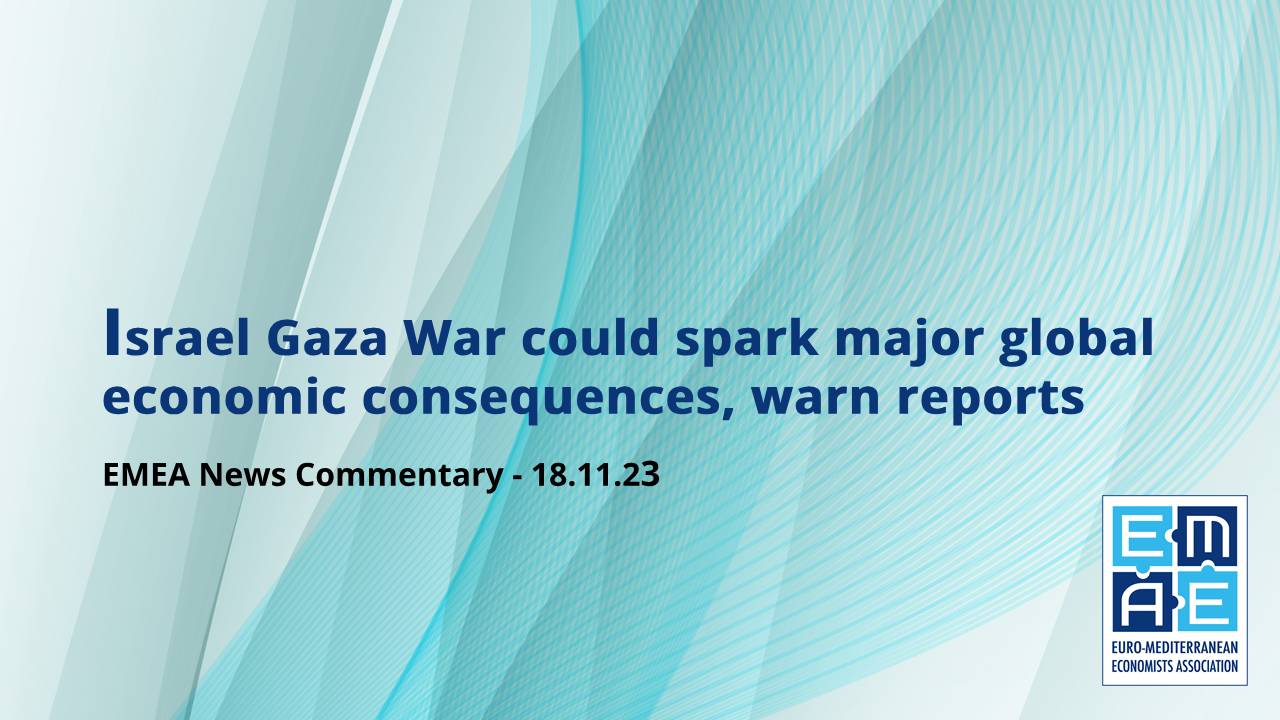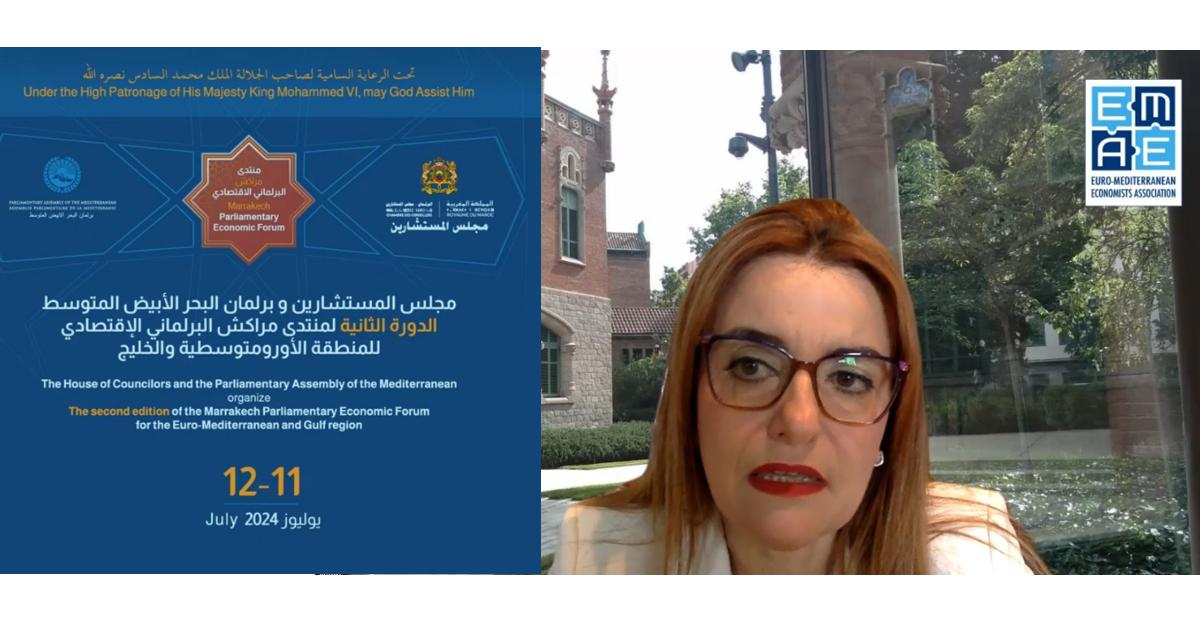If the Israel/Gaza war becomes protracted or develops into a wider regional conflict, the global economic fallout could be devastating.
A commentary by the international media organisation, Project Syndicate (PS), speaks of the potential for a 1970s-style oil shock, crashing stock markets and deep stagflationary recessions.
According to PS, there are four geopolitical scenarios bearing down on the global economy and markets – none of them ideal but some more palatable than others.
In the first scenario, the war would stay mostly confined to Gaza, with no regional escalation beyond small-scale skirmishes with Iranian proxies, in countries neighbouring Israel. The unstable geopolitical situation would survive, resulting in “mild” economic and market implications.
The second scenario, would be where the war in Gaza is followed “by regional normalisation and peace.” This would mean an end to Hamas but without too many more civilian casualties. The Netanyahu Government in Israel would be replaced, with moderate forces taking over the running of the Palestinian enclave. There would be no rush by the Israelis for regime change in Iran and, likewise, Iran would be accepting of warmer relations between Israel and Saudi Arabia – in return for new talks on nuclear weapons and a softer approach to sanctions. This scenario would have very positive economic implications, both in the region and globally, opined PS.
The third scenario would not be so rosy, with the current situation escalating into a broader regional conflict, with Hezbollah in Lebanon and Iran becoming much more actively involved. With Hamas’s elimination, this could flare up in a number of ways, through pre-emptive Israeli strikes on Hezbollah or through Iranian proxies in Syria, Iraq and Yemen attacking Israeli and US targets in the region.
Were Israel and the Americans to start bombing Iranian nuclear facilities, Iran might “make the final leap across the nuclear-weapons threshold.”
At the very least, oil production and exports would be set back for months on end, triggering a 1970s style oil crisis. This would be “followed by global stagflation (rising inflation and lower growth), crashing stock markets, volatility in bond yields, and a rush into safe-haven assets like gold.”
The economic fall-out would be greater for Europe and China than in the US, given its cushion of being a net energy exporter. Whilst there would be no regime change in Iran, “all parties in the region become more radicalised and confrontational, making peace or diplomatic normalisation a pipe dream.”
The final, fourth scenario would see the same regional conflict but the military assault on Iran would result in the toppling of the current regime, to be replaced by a moderate Government heralding Iran’s return to the international community.
“There would still be a severe global stagflationary recession, but the stage would be set for greater stability and stronger growth in the Middle East,” was the PS viewpoint.
Dangers of complacency
As for the probability of the various scenarios playing out, PS assigned a 50% likelihood of the status quo being preserved, a 30% chance of a regional conflagration with a bad ending, 15% to post-war peace, stability and progress, with 5% given to a regional conflagration with a happy ending.
This suggested a 65% probability of the conflict resulting in a mild or contained economic fall-out. However, PS warned that whilst the markets had currently only assumed a 5% chance of “severe stagflationary effects around the world,” if regional conflict unfolded, “a more reasonable figure is 35%.”
Being complacent was dangerous, the commentary warned, given that the combined probability of “a globally disruptive scenario” was still 85% (scenarios one, three and four).
“The most likely scenario might have only mild short-term consequences for markets and the global economy, but it implies that an unstable status quo will remain in place, eventually leading to new conflicts,” was the verdict.
For the time being, markets had “priced for near-perfection and favour the mildest scenarios.” But PS warned that markets frequently mispriced major geopolitical shocks and it wouldn’t be a surprise if this happened again.
A battered global economy
Meanwhile, an opinion piece by Martin Wolf in the Financial Times said that, depending on how the conflict unfolded, it would have implications for a global economy already battered by a series of shocks.
What had Hamas hoped to achieve by attacking on Israel of October 7, he asked.
The answer was surely to set the region aflame. More narrowly, it was to provoke the response that has been witnessed, with the inevitable consequences for Israel’s global reputation and the prospects for peace in the region. Making martyrs of the Gazan people in a greater cause appeared to be working, he observed.
“The way this unfolds will have implications for human lives, the regional balance of power and perhaps even global peace. But it also has implications for the global economy, which has been battered by a series of shocks over the past four years: Covid-19, the post-Covid inflation, the Russia-Ukraine war and now this.”
The shock, he said, wasn’t just about dollars and cents. Citing a “special focus” chapter in the World Bank’s most recent Commodity Markets Outlook, in relation to the Middle East conflict, this could have a major impact on the number of people suffering from severe food insecurity, which had already jumped by more than 200 million between 2019 and 2021.
Any further leap in energy prices would make this worse. In terms of the economic consequences, this would be determined by how far the conflict spread, particularly if Israel was seen as a proxy for the US, with Hamas and Hezbollah a proxy for Iran – and, by association, a proxy for Russia and China.
This could lead to “a chain of disastrous results” spreading to the Gulf and even conflict amongst superpowers.
Reliance on regional energy
If the war spread, it would certainly matter, given that the region was the world’s most significant energy producer – containing 48 per cent of global proven reserves and a third of global oil output.
The Strait of Hormuz, at the bottom of the Gulf, was the chokepoint of global energy supplies, through which 20% of world oil supply passed in 2018, according to the US Energy Information Administration. The World Bank had also noted “that past energy shocks have been significantly costly.”
Conflicts like Iraq’s invasion of Kuwait in 1990, the Arab oil embargo of 1973 and the 1978 Iranian Revolution had all led to far higher oil prices. To date, however, “the effects on oil prices of the Hamas attacks on Israel and the war in Gaza have been modest.”
Indeed, citing the 2023 Statistical Review of World Energy, the article noted that since the 1970s, oil had become less important and oil markets less vulnerable, with the intensity of global oil output declining by nearly 60 per cent since then. Supply sources had diversified, strategic reserves were larger, whilst “the creation of the International Energy Agency has improved co-ordination.”
Even so, big disruptions to oil and natural gas supply would have “a powerful impact on energy prices, global output and the overall price level, notably in foodstuffs.” Depending on the level of disruption – anywhere between a two and six million barrel a day reduction – corresponding oil prices would range from $93 to $157. With complete closure of the Strait, “the outcomes would be far worse.”
The article added: “The best way to think about this is to emphasise the uncertainty. The great probability is that the conflict will be contained. If so, the economic effects will stay insignificant. But it is possible that it will spread and so become far more serious.”
It was the responsibility of regional policymakers and external influencers “to avoid the sorts of mistakes that have proved devastating in the past.”
The big unanswered question was what Israel would now do and their political endgame. “What, if any, is the strategy for reaching an accommodation with the Palestinians? Above all, how wise will it turn out to behave just as Hamas so evidently wanted?”
Fear of rising energy prices, food costs and food insecurity
Meanwhile, as reported by the BBC, the World Bank’s chief economist, Indermit Gill, has advised policymakers to be vigilant about the scenario of a “dual energy shock”, affecting supplies of both oil and gas.
He said: “The latest conflict in the Middle East comes on the heels of the biggest shock to commodity markets since the 1970s – Russia’s war with Ukraine,” which had had disruptive effects on the global economy persisting to this day.
His deputy, Ayhan Kose, also warned that higher oil prices would inevitably lead to higher food prices.
“If a severe oil-price shock materialises, it would push up food price inflation that has already been elevated in many developing countries. At the end of 2022, more than 700 million people – nearly a tenth of the global population – were undernourished,” he commented.
The World Bank also showed concern that an escalation of this latest conflict would intensify global food insecurity.
The economic consequences of the Israel-Hamas war
World Bank warns oil prices could reach $150 a barrel – BBC News





